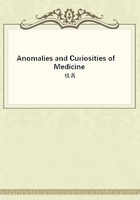
第2章
Remarkable injuries illustrate to what extent tissues and organs may be damaged without resultant death, and thus the surgeon is encouraged to proceed to his operation with greater confidence and more definite knowledge as to the issue. If a mad cow may blindly play the part of a successful obstetrician with her horns, certainly a skilled surgeon may hazard entering the womb with his knife. If large portions of an organ,--the lung, a kidney, parts of the liver, or the brain itself,--may be lost by accident, and the patient still live, the physician is taught the lesson of nil desperandum, and that if possible to arrest disease of these organs before their total destruction, the prognosis and treatment thereby acquire new and more hopeful phases.
Directly or indirectly many similar examples have also clear medicolegal bearings or suggestions; in fact, it must be acknowledged that much of the importance of medical jurisprudence lies in a thorough comprehension of the anomalous and rare cases in Medicine. Expert medical testimony has its chief value in showing the possibilities of the occurrence of alleged extreme cases, and extraordinary deviations from the natural. Every expert witness should be able to maintain his argument by a full citation of parallels to any remarkable theory or hypothesis advanced by his clients; and it is only by an exhaustive knowledge of extremes and anomalies that an authority on medical jurisprudence can hope to substantiate his testimony beyond question. In every poisoning case he is closely questioned as to the largest dose of the drug in question that has been taken with impunity, and the smallest dose that has killed, and he is expected to have the cases of reported idiosyncrasies and tolerance at his immediate command. A widow with a child of ten months' gestation may be saved the loss of reputation by mention of the authentic cases in which pregnancy has exceeded nine months' duration; the proof of the viability of a seven months'
child may alter the disposition of an estate; the proof of death by a blow on the epigastrium without external marks of violence may convict a murderer; and so it is with many other cases of a medicolegal nature.
It is noteworthy that in old-time medical literature--sadly and unjustly neglected in our rage for the new--should so often be found parallels of our most wonderful and peculiar modern cases.
We wish, also, to enter a mild protest against the modern egotism that would set aside with a sneer as myth and fancy the testimonies and reports of philosophers and physicians, only because they lived hundreds of years ago. We are keenly appreciative of the power exercised by the myth-making faculty in the past, but as applied to early physicians, we suggest that the suspicion may easily be too active. When Pare, for example, pictures a monster, we may distrust his art, his artist, or his engraver, and make all due allowance for his primitive knowledge of teratology, coupled with the exaggerations and inventions of the wonder-lover; but when he describes in his own writing what he or his confreres have seen on the battle-field or in the dissecting room, we think, within moderate limits, we owe him credence. For the rest, we doubt not that the modern reporter is, to be mild, quite as much of a myth-maker as his elder brother, especially if we find modern instances that are essentially like the older cases reported in reputable journals or books, and by men presumably honest. In our collection we have endeavored, so far as possible, to cite similar cases from the older and from the more recent literature.
This connection suggests the question of credibility in general.